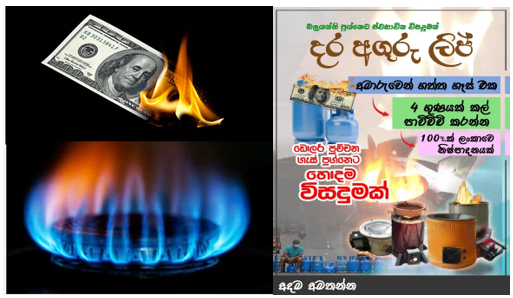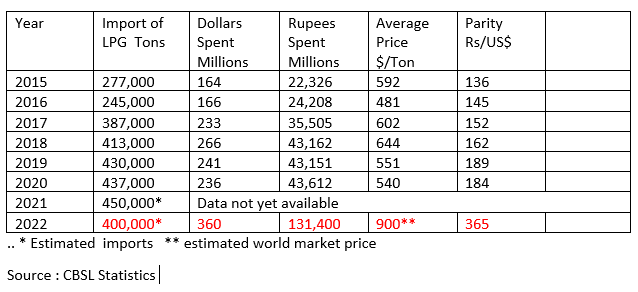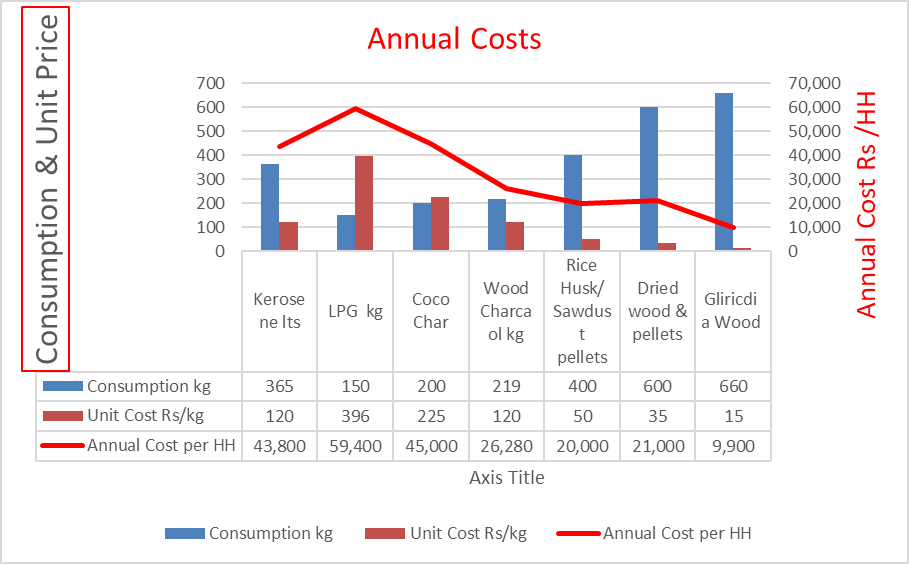Are we to burn the Dollars borrowed, just to Cook a Meal ?
BY Eng. Parakrama Jayasinghe

How many of the consumers who opt to use LPG for cooking, realize that they are burning the dollars borrowed with difficulty, just to cook a meal, while the use of LPG hardly brings in any foreign exchange? The reality is that while the country is struggling to raise the dollars even through loans to import adequate supplies of transport fuel, taking loans to import LPG, which will not result in any Forex earnings could hardly be considered ethical or a priority.
The CBSL data below shows the immense amount of dollars drained out of the country in the past years, purely due to the high powered promotions to coerce and trap the consumers to this non sustainable consumption.

With the escalation of world market prices and the depreciation of the rupee , the impact in rupee terms in year 2022, if we are to import the same quantities, would be much greater as estimated. The Governor of the Central Bank has quite rightly stated that
Sri Lanka will have to manage with available dollar inflows, not bridging finance: CB Governor
By Economy Next • Issue #391
However, the attempt by the government appears to be determined to continue this practice at whatever cost and detriment to the economy, to perpetuate a practice foisted on the people by unscrupulous officials, and thereby try and pretend that the gas queues are over. This has been achieved for the present, thanks to a further loan of $ 70 Million from the world bank, to import 30,000 tons of LPG recently. Perhaps the daily visuals of the gas queues, that the electronic media took pleasure in broadcasting, may also have pushed the government to this short sighted move.
The other side of the coin is that, before the arrival of this load of LPG, while the empty cylinders remained in the queues, the people were absent. No doubt they sought and found alternative means of cooking their meals, albeit with less convenience than using gas. Obviously they would also have been helped in this by the intrepid efforts of many Sri Lankan entrepreneurs who designed and manufactured cooking stoves to use either fuel wood or charcoal, which does not require any dollars. As the novel stoves are yet to be available in adequate numbers in the market, although the manufacturers were running long waiting lists. As such some consumers may have been forced to revert back to direct use of fire wood, accepting the disadvantage of smoke and soot. But Sri Lanka has already introduced most acceptable models of cooking stoves to use wood and wood charcoal, devoid of any smoke and soot. These have proved to be acceptable alternatives to the use of gas stoves for the daily cooking needs, even in high rise apartments.
The reality is that the consumers have recognized the fact that the government or the officials cannot be relied upon to provide their essential needs, and their salvation lies in seeking indigenous alternative solutions themselves which have proven to be equally effective.
But shouldn’t this positive change have been noted by the authorities and fostered with the same vigour with which the use of the imported LPG was promoted? What about the media? They diverted their cameras to the petrol and diesel queues, obviously the emerging negative scene of news value.
The officials of the Litro gas company are heard to give assurances of continued supply of LPG in the future, while they admit the loan received is adequate for supplies up to October only. According to their web page their customer base exceeds 4,000,000. The consumption in 2020 was 437,000 tons, purchased at a cost of $ 236 Million. By now it would exceed 450,000 tons annually. How far would the $ 70 Million loan would go at present day gas prices? What happens next? Are they hoping to get yet another loan, when the Ministry of Power and Energy is forced to restrict the issue of essential transport fuels to a minimum, due to lack of Dollars? Isn’t this a willful deception of the consumers?
Therefore, the discerning consumers are well advised to consider the following points in their decision making for the future.
- The import of LPG is possible only through loans which will have to be paid by our children and grandchildren
- Continued dependence on LPG is a never ending problem and will need more and more loans with no chance of the LPG leading to any foreign exchange earnings
- The loans taken have to be re paid by the entire country ,while the benefit is enjoyed by only a limited section of the society, which is morally unacceptable
- For those fortunate to get even a cylinder of LPG, adopting the already available options of stoves using either charcoal or wood , for the cooking of the main meals , would substantially reduce the monthly expenditure as shown below. This would preserve the LPG cylinder bought with difficulty, to be available for any limited usage in between and for any emergencies for many months

- The consumers can be the drivers of the change which would reduce the demand for LPG and thus save the country millions of Dollars year after year
- This would create a significant indigenous industry whereby the millions of Dollars sent out would flow to the local industrialists and rural communities supplying the charcoal and wood. Even a 50% reduction of the imports could result in a local industry worth over Rs 80 Billion annually.
These are indeed practical and worthwhile contributions to resolve a national problem. Are each of us ready to commit to extend the use of our LPG cylinder to last several months, thereby reducing the demand to 50% or even to 25% in the coming year? This should be considered a national duty by all of us. Industry
Just to assuage any fears of deforestation, contrary to popular belief, Sri Lanka already has adequate renewable and sustainable biomass resources formally counted as over 12,000,000 tons annually, contributing to 50% of the total primary energy demand. Simultaneously, a practical program of social reforestation has to be encouraged where the user of charcoal, plants wherever he can, trees to compensate for the charcoal he uses. In this way the next generation will also be assured of their own sustainable supply with absolutely no impact on the forest cover. A plant that can be recommended is Gliricidia Sepium among others, which can be harvested in two years, and thereafter every eight months.
None of the present stoves in the market have been designed or built by engineers. While there is no 100 % perfect solution , including the LPG which caused immense problems not to far back, it is up to the engineers to take up the challenge to make them near 100% perfect, to address the objections posed by some with tunnel vision. This intervention must cover not only the design and manufacturing methods for the stoves, but also the related issues with respect to the supply chain and processing requirements of the fuels for optimum results.
Are we ready to accept this challenge at this time of need which can spawn an indigenous industry of immense value
 Eng. Parakrama Jayasinghe
Eng. Parakrama Jayasinghe
C Eng. FIE(SL), Council member
Bio Energy Association of Sri Lanka
Solar Industries Association of Sri Lanka
Sri Lanka Forum for Sustainable Consumption and Production Forum
E Mail: parajayasinghe@gmail.com








